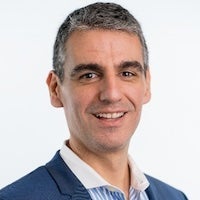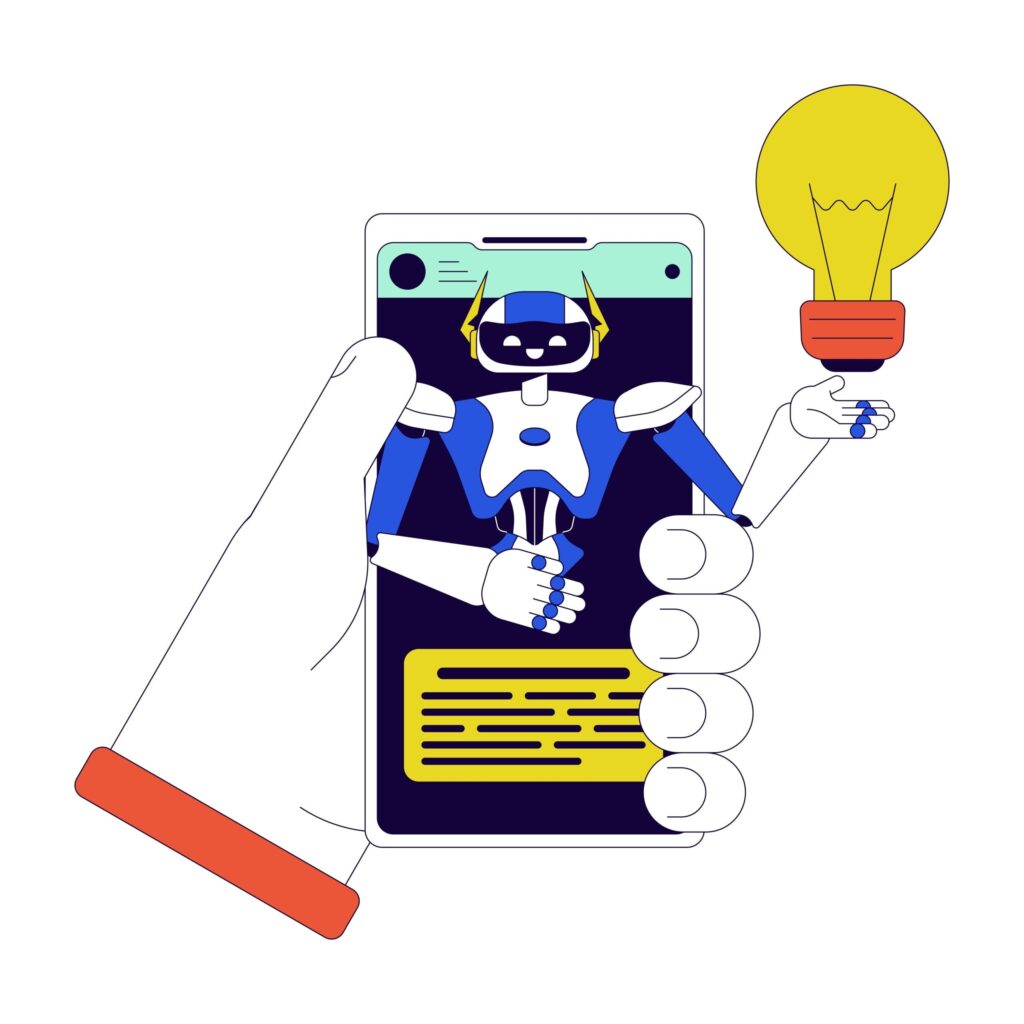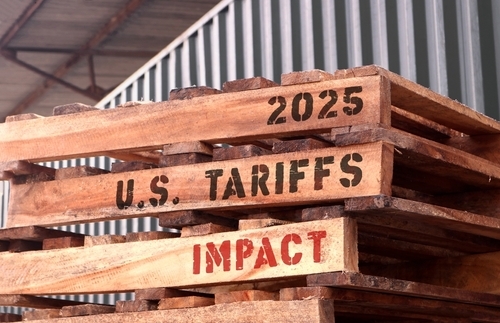Coors Light engineered its cans to change color when the beer was cold enough to drink—from grey Rocky Mountains to ice cold blue—back in 2009. It was a new concept for consumers that warranted a marketing campaign. But today, many younger beer drinkers are unaware of the color-changing tech on its packaging.
That meant it was time for a refresh, according to Marcelo Pascoa, Vice President of Marketing at Molson-Coors. “Marketers sometimes get too comfortable with the things that we know about. But we forget that if we stop talking about them, sooner or later, a new generation of legal-aged consumers is going to come in, and they have never heard about that before,” Pascoa told Chief Marketer. “From time to time, you need to go back to product basics. You need to remind people what makes you unique.”
Since then, consumer preferences and distribution channels have evolved. And audio-based storytelling is “a brave new world,” Pascoa says. So for the blue mountains’ reintroduction, the brand created an audio ad featuring professional voice actors taking a 40-degree cold plunge alongside Coors Light, in which listeners can “hear” the freezing cold through the actors’ shaky voices. Plus, the filming of the experience—containing regrets and bleeped out curse words to boot—was compelling enough to share on social.
We spoke with Pascoa about the origin of the campaign, why audio storytelling worked for this particular creative, the challenge of reinventing Coors brands for younger folks, and his approach to AI-based storytelling.
Chief Marketer: What was the inspiration for the cold plunge ad and campaign?
Marcelo Pascoa, Vice President of Marketing at Molson-Coors: There is one thing about Coors Light that I have always loved since I discovered the brand. And it’s the fact that the mountains in our packaging go from gray to blue to signal when the beer is cold enough to drink. We had done a few campaigns about that before. There was one in which we showed bottles from the competition exploding inside of a freezer—which by the way, was also created by [the agency] Alma—because they don’t have that device.
But the truth is that although this has been on our packaging for the longest time, there are a lot of younger legal-aged consumers who don’t know about that. They don’t even know that the mountains turn from gray to blue, let alone that it signals that it’s when it’s cold enough to drink. We marketers sometimes get too comfortable with the things that we know about, but we forget that if we stop talking about them, sooner or later, a new generation of legal-aged consumers is going to come in, and they have never heard about that before.
The good news is that we have tested that attribute recently, and when people find out that our packaging has that they love it. But they don’t know about it. A lot of people [aged] 21 to 34 don’t know about it. So we wanted to find a way to do just that—go to people and say, Hey, did you know that the mountains on Coors Light go from gray to blue to signal when it’s cold enough to drink? Because Coors Light is all about refreshment. And I always say that Coors Light is about chill. You don’t get chill from a beer if you crack it open and you don’t have that stupid cold feeling of refreshment.
We wanted to find a fun, exciting way, because it’s also a message that is a hundred percent about ourselves. And no one likes someone who is just talking about themselves, especially if it is a brand. So the challenge was, how do we find a fun, unexpected way of telling people about this device that we had that they don’t know about? And that’s the challenge that we gave them.
So, we have an ongoing [agreement] with creative partners to come up with ideas that can explain to people why Coors Light delivers superior refreshment. But we don’t want to do that in a boring, preachy way. The script is very bland—we’re basically talking about ourselves—but the moment that you put the voice actors into a tub that is so cold that they cannot help but react to the cold that they are feeling, then that message that could have come across as a bit contrived or self-centered becomes a lot of fun, and people get a kick out of it.
CM: Have you done audio ads for this particular feature before?
MP: I don’t remember having done audio spots for this specific feature, because as I was telling you, there was a time when we were talking a lot about that when we introduced that device into our packaging. But then it became very well known. It wasn’t new news for anyone anymore, so we were not focusing on that as much. But from time to time, you need to go back to product basics. You need to remind people what makes you unique. So right now, this is just one idea that you can expect to see that is going to show how cold Coors Light really is, in a fun, unexpected way. We have a lot more coming as we head into the summer. This is going to be a big topic.
CM: What are the other aspects of the overall campaign?
MP: We also have a bunch of different assets running on social and digital that are specific about cold. And in everything that we do, we try to bring that balance between physical and emotional refreshing. This is why we love the idea of “chill” and choosing chill so much. Because it connects as much with life in general with situations that are relatable to people. They can choose to have a true mindset when dealing with the craziness in the world. But it’s also connected to the product because of what I was just telling you—that feeling that you get when you take that first sip of a really cold Coors Light. So there’s a lot more coming in that way.
We use audio all the time … I’ve been doing this for a long time. There was a time when radio was more important than TV. Radio was much bigger than TV. And then there was a time when radio was as important as TV, and then TV kind of became more important, and then the whole digital revolution started shifting a big chunk of our investments towards those channels. But audio today is this brave new world. It’s not just about how radio can still play a very relevant role in our media plans, but it’s also an opportunity to create content for streaming services.
And you have to remember that if someone is listening to Spotify and you’re going to interrupt that experience to bring a message from a brand, that’s not really what they want. People don’t press play on Spotify because they want to listen to advertising. So we have to be mindful of that, and we have to offer something in return for their attention. So the least we can do is try to make that interruption fun, engaging, that people might get a laugh out of it so that the connection with consumers can be much more successful, as opposed to delivering your brand message in a very dry, boring way.
CM: Do you have any sense as to whether audio is working well for the brand right now? What are your expectations for it?
MP: We don’t disclose results from our tracking methodologies, and this campaign is just launching now. But we at Molson-Coors are very committed to what we call creative effectiveness. And basically that comes from the belief that great advertising sells product. Sometimes people think that it’s a choice between something that is going to be highly creative, engaging, surprising, unexpected, magnetic, or doing something that is going to sell the product. And that is the case if you don’t have talented creative partners, right? Alma has been a strategic partner of ours for the longest time, and they really understand the brand, they understand the product, they understand the business challenges, but they’re also highly creative. So we don’t have a lot of results yet, but we do track everything that we do.
But also, when we think about media, we think about it in different ways. From one hand, again, it’s about the creative effectiveness. It’s about bringing together effectiveness and creativity at the highest level. Sometimes we need to create something for a certain medium because we know that that medium is a very efficient way to communicate with consumers, but sometimes we choose to use a medium based on the idea itself. So sometimes the idea is actually telling us what the best medium is for it to exist. And that’s what happened in this case. The device is very visual.
And by the way, that’s also why we created these really fun videos that we are running on digital and social platforms, so that people can actually see it. But we actually believe that this works perfectly well just by hearing the sound, because the fun part about it is the way that they cannot deliver the speech, even though they are professional actors and they are trained to deliver under any circumstances. The cold is so extreme that they cannot help but allow the cold to be translated into their voices. When they stop themselves, when they scream, when they cannot go on, sometimes they curse. We bleep the curses, but we included them because although they are bleeped they are there because they are genuine, authentic reactions that those trained professional voice actors had because of being in that 40 degree cold plunge.
CM: You’re referring to the behind-the-scenes video of filming the commercial. Will that live on social?
MP: Yeah, it’s mostly for social. The real media power of this campaign is focused on audio. This is an audio idea, first and foremost. But when something is really fun, people often enjoy understanding how it was made, how it was created. And we felt that in this case, the situation itself was going to be funny. We believe that it comes across a hundred percent through audio only. But when we were doing it, we were already shooting for that content because we wanted to be able to talk about the idea and at least share with the people, this is how we did it. You can take a look at it. But it turned out to be so funny—at least we believe so—that we said, oh, we have to show this to consumers as well. But the number one touchpoint for this campaign is still audio.
CM: Moving on from this campaign and into the topic of marketing in general. What are the top challenges you’re dealing with as a marketer right now, and how are you meeting them?
MP: I work with the Coors family of brands, and the Coors brand has been around for 150 years. So right now I’m thinking about two challenges: one that is timely and one that is timeless. The timeless challenge is when you are a brand that has been around for a long time, you’re going to have to reinvent yourself without losing your essence. Actually, you’re not reinventing yourself, but you can reinvent the way you communicate, the way you connect with people, without losing your DNA, of course. But we also need to adapt to how people evolve the things that they are more interested about, they’re more passionate about. This is a big priority for us.
CM: Can you provide an example?
MP: Talking about our two major brands within the Coors family, Coors Light and Coors Banquet, one of the biggest challenges that we have is reintroducing the brand to new generations of 21 to 34-year-old consumers. Because we know that there are people who have been drinking us for a long time, they absolutely love us, they will keep drinking us, but for the brand to have a future that is as successful as its present, we need to introduce the brand to new 21 to 34-year-old consumers.
When it comes to Coors Light, this is really a story about chill. I joined the company in 2020, but in 2019, the brand went through a major repositioning. And basically the idea was that at the time they looked at advertising from the years preceding 2019, and there was almost an excessive focus on the physical side of cold … That’s an important part of what we do. But the emotional layer wasn’t as strong as it had been before at the time. So that’s when the brand was repositioned [itself], and we started to be about “chill.” … And since then, we have seen a lot of progress… We have had a very successful journey over the past five years when it comes to our brand and our business.
And a lot of it comes from bringing this emotional layer of chill to our masses when it comes to Coors Banquet. Coors Banquet is actually the best proofing point that we have today—that a brand that was created 150 years ago can still be extremely relevant for young, legal-aged consumers. Banquet today is the fastest growing beer brand for Gen Z in the U.S. And why is that? Well, it’s a combination of two things. First of all, this really was a visionary brand. This was a brand that was talking about recycling. The recyclable aluminum can was pioneered by the Coors Master brand with Coors Banquet in the late ’50s.
It’s also a brand that has never compromised its quality for profit. Banquet, to this day, is only brewed in Golden, Colorado. We have many breweries around the country and the world. If it is not brewed in Golden, Colorado, it cannot be called Coors Banquet, and that’s because it still uses a hundred percent Rocky Mountain water … Could we manipulate water from other places so that it tastes like Banquet? Of course, we have the technological expertise to do that, but that’s not what we want to do. Because Banquet is about doing what’s right, even when it’s hard. And that’s how we believe that we have built such a legacy.
They created a beer more than a hundred years ago—and they kept it that way through all of those decades—that today has attributes that appeal a lot to Gen Z. Why? Because they’re about timeless things that younger legal-aged drinkers care about: authenticity, doing what’s right even when it’s hard, having principles and sticking to them. And building a legacy that you can be proud of.
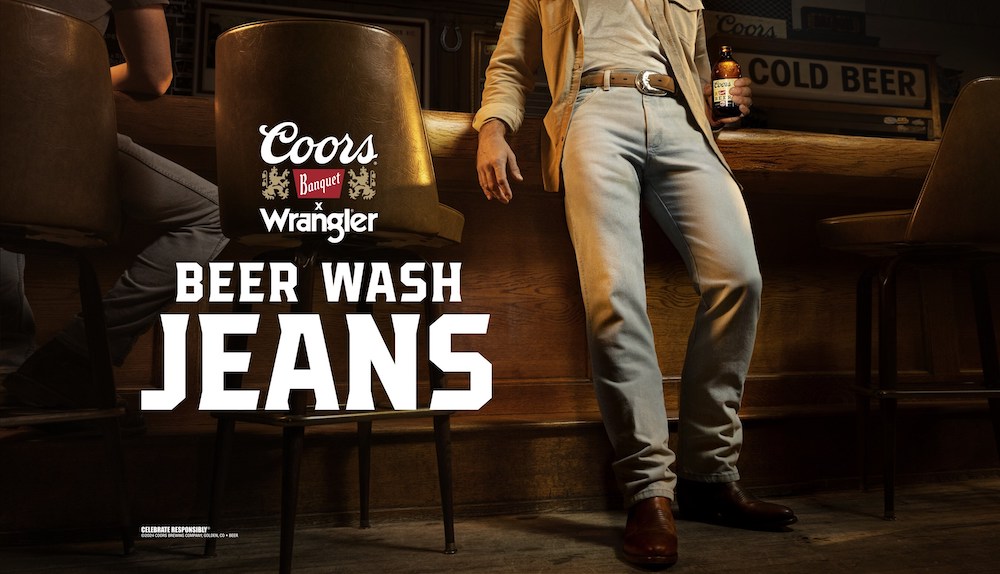
CM: Following up on Gen Z for a minute. Can you share how you’ve reached those consumers?
MP: This is a story that we talk about all the time, because we’re very proud of it. Basically, it’s a combination of one, the fact that throughout all this time, as I was saying, we have been sticking with decisions that are not easy, but that are about never compromising the quality of the product. If we didn’t have that, I could do the best marketing in the world trying to come across as authentic, as a high quality product. But if it is not there, younger people today are too smart to be fooled by advertising that is not supported by the product.
The other thing is that we have found, again and again, ways to keep the essence of our brand, but connecting it to culture and with things that people care about today. For example, “Yellowstone” has been a big partnership for us. Yellowstone is one of the most successful entertainment franchises in American history. And we had been there for many seasons. Why? Because the values that we have as a brand connect deeply with that universe. (Not all the murders, let me just be clear about that.) But that universe is just a natural connection. We have now a big partnership with Wrangler, because again, when you look at what both brands stand for, it’s almost like two versions of the same story—with their own specificities and idiosyncrasies, but that connection is there. That’s the beauty of taking a brand that has been around for the longest time, but reinventing itself without losing who we are, but evolving so that we can connect with culture.
For example, last year Banquet broke historic records, in terms of how much revenue we brought into the company, not by selling beer—by selling beer, we’re also breaking a lot of records—but by selling merch, by selling clothing. If you go to the Carolina Country Music Festival that is coming up later this year, you will see a lot of people wearing Banquet on their t-shirts, their hats. This is proof that the brand has always had a big role in culture, but we’ve been able to keep the brand relevant in culture by evolving the way we connect to people.
CM: And the second marketing challenge?
MP: The other one is the same challenge that everybody is facing. There is a little bit of uncertainty in the macroeconomic context right now. That’s also normal. There are moments when people are feeling more optimistic. There are moments when people are feeling less optimistic. There are moments when we’re facing some headwinds. There are moments when the wind is pushing us forward. Obviously, when you look at the entire beer industry, you do see some fluctuations here and there. This is the moment that presents some challenges, but we feel very prepared to address those challenges.
CM: What’s your position on AI being used in creative? Are you experimenting with it?
MP: Yes. We see AI as a tool that can empower creatives. It is different in that it’s advancing really fast. It’s going to bring a lot of transformation to the world. But we have been dealing with that since the beginning of times. You couldn’t print stuff on paper, and then suddenly you can. You couldn’t share photos via an app and now you can, et cetera, et cetera. We believe that the best results come from this combination of human and artificial intelligence in the sense that you have creative people that can use those tools to create ideas and campaigns that are going to be more creative and more effective.
One example that I can give you is something that we’re doing with Coors Light that is happening right now. For baseball fans, the season is starting now. Everybody’s excited, right? And sometimes people buy tickets because those are the tickets that they can find, but they get to the stadium and there is a column right in front of them—what we call obstructed views. It’s quite remarkable that some fans are so in love with their teams that they can be chill about that and say, yeah, it’s not the best seat. Yes, my view is a little obstructed, but I’m still there. I’m still getting that energy. I’m still getting the chill that I need from that experience of watching a team that I love so much play.
We are rewarding those consumers who choose chill in those situations and buy those tickets by using AI. They can just take a photo of their view, and then AI can instantly assess to what percentage their views are obstructed, and the more obstructed the view, the more brew you get. So we turn that obstruction into a coupon that you can use to buy Coors Light at the stadium. We think that is really smart. Creatives have found a way to use AI to make people’s lives simpler, better or more fun. And that’s what it is about in the end. If we as brands cannot do things that are going to make people’s lives a little bit better, a little bit more fun, a little bit more convenient, a little bit more refreshing, why would they be choosing us?

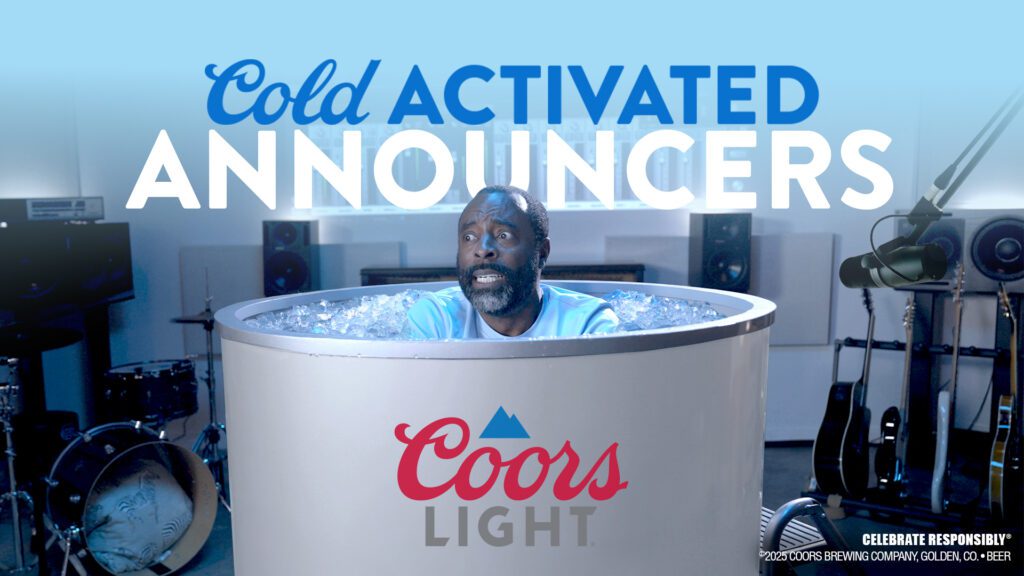
 Network
Network